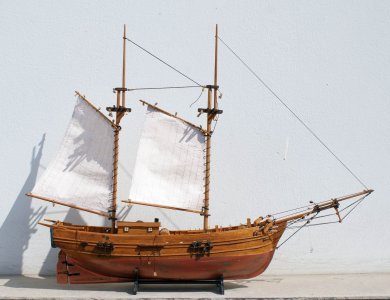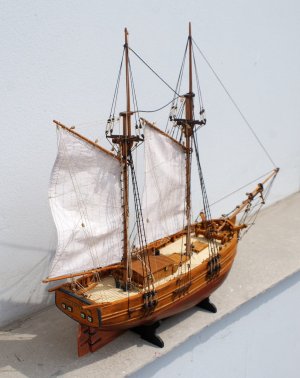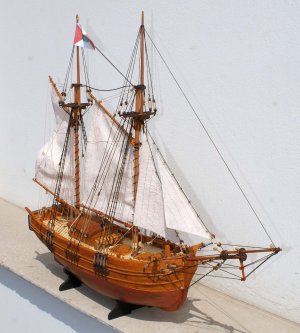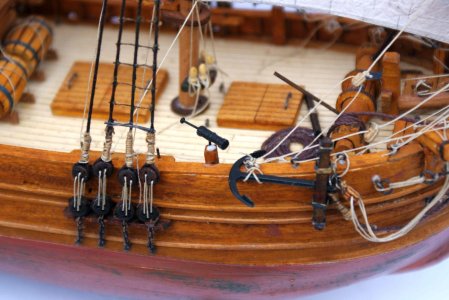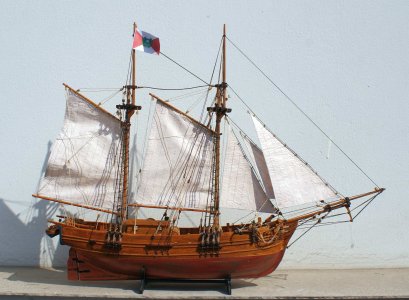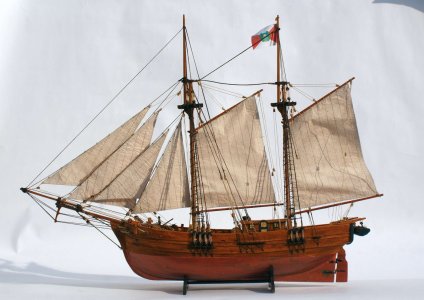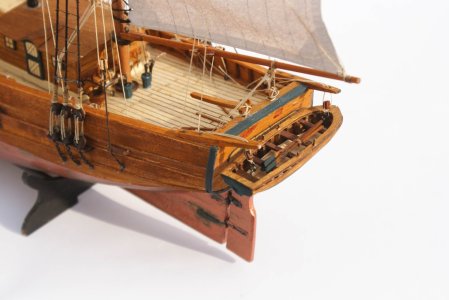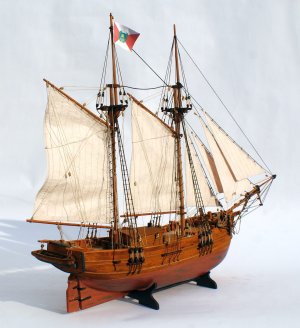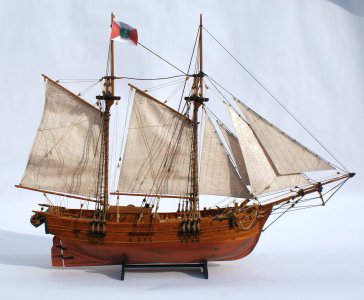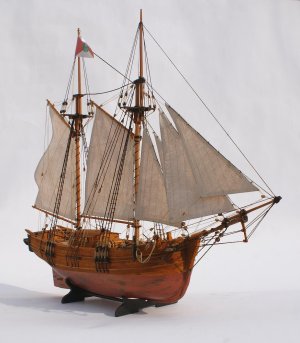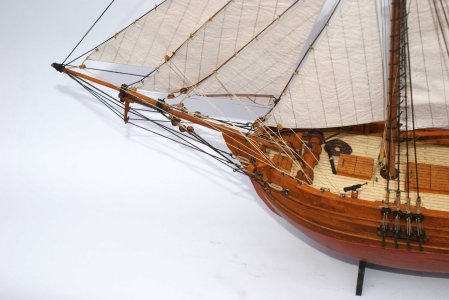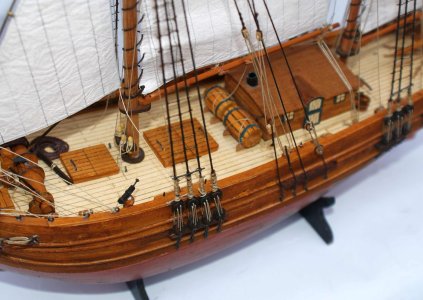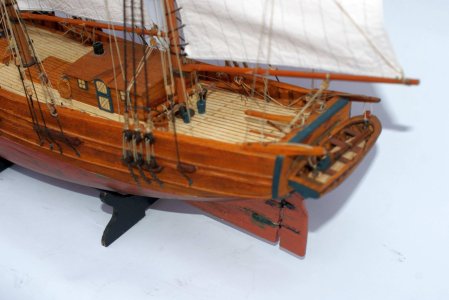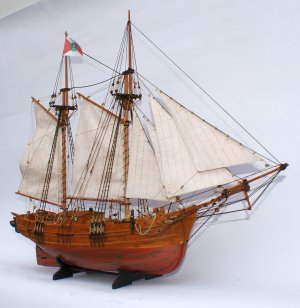Pailebote "SACRAMENTO" 1821, First ship of the Peruvian fleet. Scratch, scale 1:75
OK… today I present to you a boat that I prepared a year ago and I pay tribute to the first ship of my country’s navy, which is:
PAILEBOTE "SACRAMENTO": FIRST SHIP OF THE PERU SQUAD (Part 1 OF 2)
The project I present is my version of the "Sacramento", which from being a royalist mail pailebote (or paylebot as they wrote it then) or schooner, became the first ship of what would become the Peruvian Navy; I say that it is "my version" because there is no exact record of the characteristics of this ship, rather there are discrepancies regarding the mast. I have taken references from the war reports, the inventory after capture, studies and forms of ships of similar use from that time.
1. HISTORY
Some paragraphs have been taken from the references in section 2 and others have been reduced, but in general they describe her capture.
"March 1821, are days of great revolutionary bustle in Peru - the people are extremely active and Lima is in an uproar. The viceregal authority, unable to contain the libertarian impetus, eases the imminent entry of San Martín to the capital"
“On Tuesday the 10th of the indicated month and year, the Sacramento mail packet departed from Callao, dispatched by the General Post Office Administration of Lima. She carried on board her the King's officers, passengers, cargo, state funds and interesting royalist political correspondence; She sailed under the Spanish flag. As a courier-packer, she always followed previously drawn itineraries to fulfill her specific mission. The ship was under the command of the Spanish Captain Don Miguel Gamón; Don Juan Antonio de Tellechea served as Chief Pilot. The crew, largely from Piura, was made up of 10 men, plus a garrison of 3 soldiers and 24 passengers."
“The final destination of the vessel was Panama. But previously he had to stop in Paita (peruvian port) to deliver part of the confidential internal mail he was carrying: as well as to find out what the inclination of the residents of the area was regarding independence, but informed by a Sechuran (small bay in Piura) boss that that region was decided "by the independence", the ship resumed its journey towards Panama. On March 17 at around eleven at night and being in the lee of Máncora, the pailebote was "taken to the independence" by the boatswain Don Victoriano Cárcamo and his brother Don Andrés Cárcamo, supported by seven of the crew. This action only met with some resistance from two royalist officers, both of whom were wounded. The remaining passengers were arrested and confined under lock and key.”
Heading to Paita, Victoriano Cárcamo made both the conspiring crew members and the rest of the crew "swear independence", rewarding them financially for greater security of the ship. Four days later and already in Paita waters, the revolutionaries landed, arranging the transfer to land of the prisoners and luggage; The ship, as a guarantee for everyone, was "secured without rudder or sails." San Martín who -as has already been said- had his General Headquarters in Huaura. He immediately ordered the transfer of the ship to the port of Huacho, immediately installed an office on board and from there the Argentine patriot began to dispatch the correspondence inherent to his functions as Captain General of the Liberating Expedition of Perú. Armed with a small cannon and assigned a crew of 36 men. Later, by decree of October 7, 1821, the Sacrament was renamed with the new name of Castelli.”
Thus, the Peruvian State squadron began with this ship, becoming the first of its naval units. He then intervened in the capture of the schooner Macedonia (9/19/1821) and the blockade of the southern ports, an area still occupied by the royalists and on which San Martín had conceived an operation that began in October and reached the end. of 1821 to the bay of Mollendo together with the corvette “Limeña” and the brigs “Balcarce” and “Belgrano” beginning the “campaign of intermediate ports”
2. REFERENCES

 repombd.bnp.gob.pe
repombd.bnp.gob.pe

 repombd.bnp.gob.pe
https://repositorio.imarpe.gob.pe/b...CUMENTA AÑO ENERO FEBRERO DE 1972 N° 13-14(1% 29.pdf
repombd.bnp.gob.pe
https://repositorio.imarpe.gob.pe/b...CUMENTA AÑO ENERO FEBRERO DE 1972 N° 13-14(1% 29.pdf
https://percyeguiluz.blogspot.com/2021/06/
3. MODELBUILDING
From the drawings of a ship of approximately 23 meters in length and the lines of the hull, the sections for the frames, the shape of the deck and the dimensions of the rigging were obtained. It was drawn in AutoCAD and the frames and main parts were laser cut on 4 mm and 1.5 mm plywood sheets. The false keel and frames were assembled and after confirming their alignment, balsa wood fillings were placed in the bow and stern to give the hull the proper shape and facilitate the placement of 2x5 mm strakes.
For sealing, a mixture of putty, chips and white rubber was prepared, filling the joints and deficiencies in the lining; and sanding with No. 100, 150 and 320 and sealed with a diluted lacquer to stabilize the seal. As a test, instead of assembling the deck decking with 0.5 mm veneers, this time a pre-drawing with a laser was made on the 1.5 mm plywood.
The 1x4 mm rail was prepared and fixed and the 1.5x1.5 mm rails were installed. After sanding the entire hull, the living work was sealed with lacquer and honey-colored dye was applied to the entire dead work and painted in gunmetal white (later the color was changed, as information was found that this ship had copper lining). .
The rudder and its tiller, the winch, the cabin, hold entrances, bitts, locks, anchors, spreaders were prepared; The bowsprit, masts, peaks or gaff, booms and other elements were made and placed, giving their taper to hardwood rods. They were stained in honey color and certain parts in walnut.
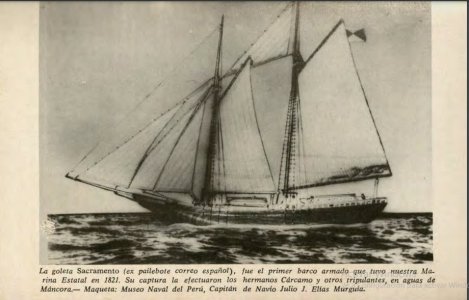
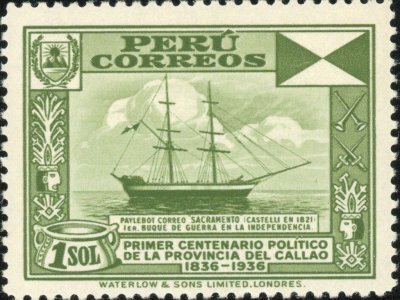
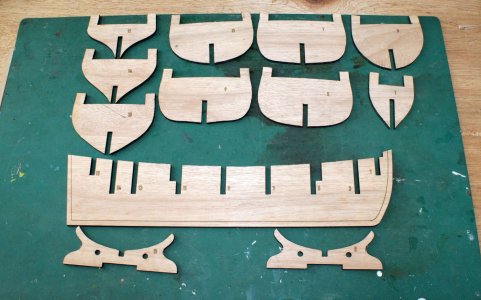

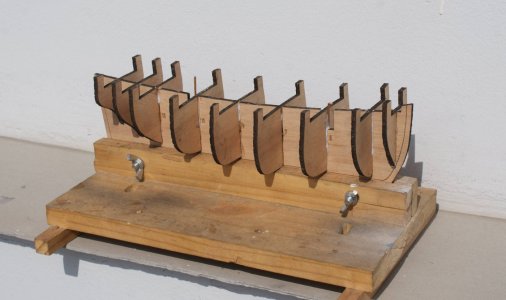
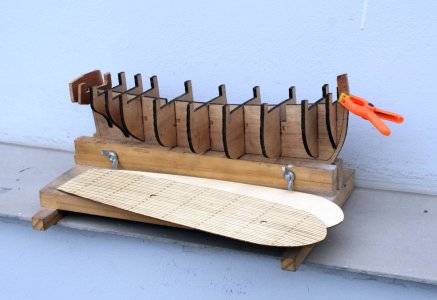
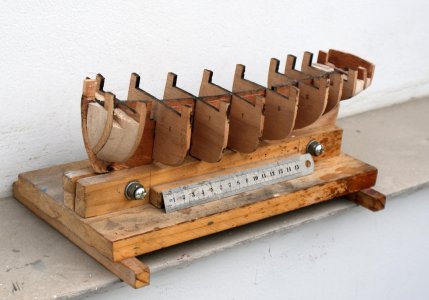
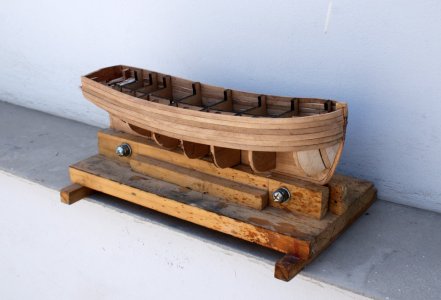

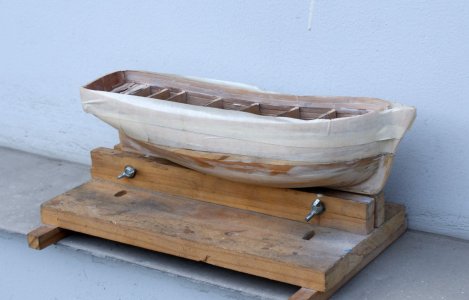
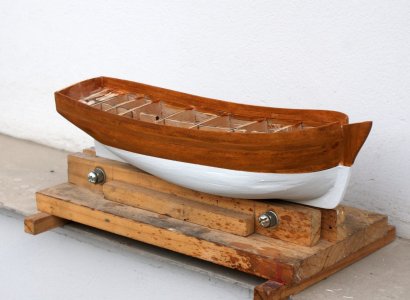
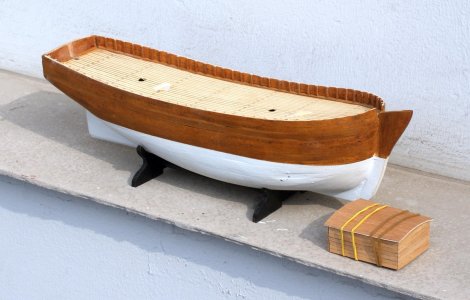
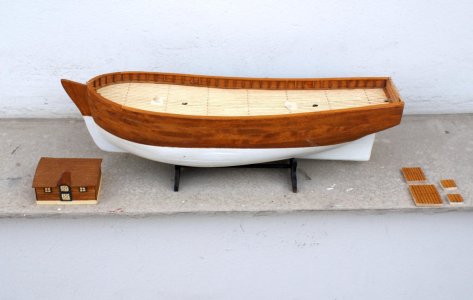
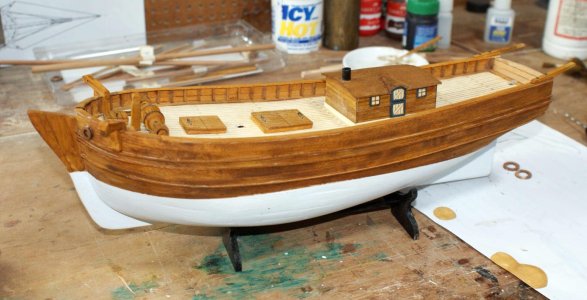
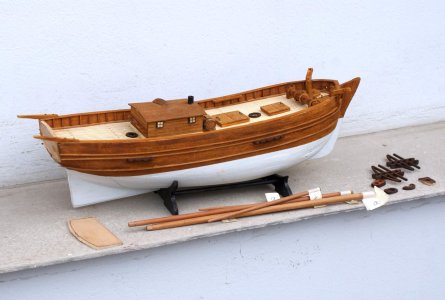
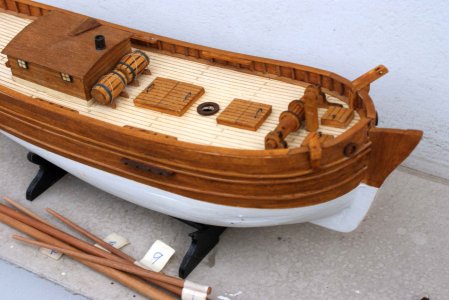
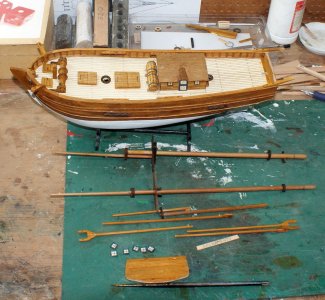
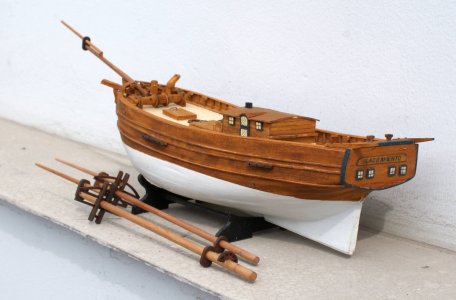
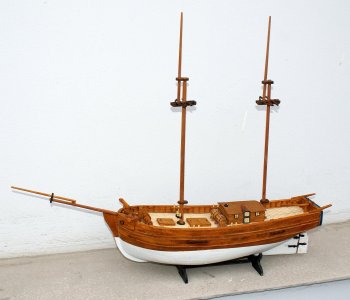
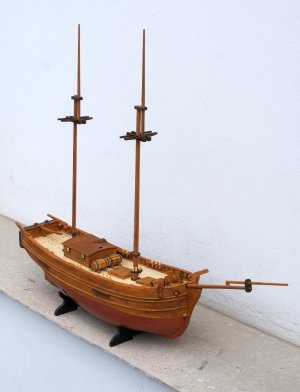
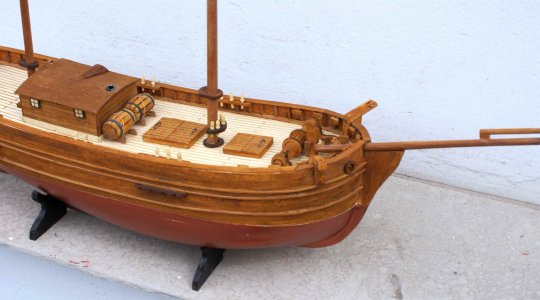
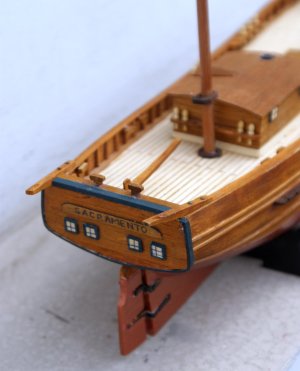
OK… today I present to you a boat that I prepared a year ago and I pay tribute to the first ship of my country’s navy, which is:
PAILEBOTE "SACRAMENTO": FIRST SHIP OF THE PERU SQUAD (Part 1 OF 2)
The project I present is my version of the "Sacramento", which from being a royalist mail pailebote (or paylebot as they wrote it then) or schooner, became the first ship of what would become the Peruvian Navy; I say that it is "my version" because there is no exact record of the characteristics of this ship, rather there are discrepancies regarding the mast. I have taken references from the war reports, the inventory after capture, studies and forms of ships of similar use from that time.
1. HISTORY
Some paragraphs have been taken from the references in section 2 and others have been reduced, but in general they describe her capture.
"March 1821, are days of great revolutionary bustle in Peru - the people are extremely active and Lima is in an uproar. The viceregal authority, unable to contain the libertarian impetus, eases the imminent entry of San Martín to the capital"
“On Tuesday the 10th of the indicated month and year, the Sacramento mail packet departed from Callao, dispatched by the General Post Office Administration of Lima. She carried on board her the King's officers, passengers, cargo, state funds and interesting royalist political correspondence; She sailed under the Spanish flag. As a courier-packer, she always followed previously drawn itineraries to fulfill her specific mission. The ship was under the command of the Spanish Captain Don Miguel Gamón; Don Juan Antonio de Tellechea served as Chief Pilot. The crew, largely from Piura, was made up of 10 men, plus a garrison of 3 soldiers and 24 passengers."
“The final destination of the vessel was Panama. But previously he had to stop in Paita (peruvian port) to deliver part of the confidential internal mail he was carrying: as well as to find out what the inclination of the residents of the area was regarding independence, but informed by a Sechuran (small bay in Piura) boss that that region was decided "by the independence", the ship resumed its journey towards Panama. On March 17 at around eleven at night and being in the lee of Máncora, the pailebote was "taken to the independence" by the boatswain Don Victoriano Cárcamo and his brother Don Andrés Cárcamo, supported by seven of the crew. This action only met with some resistance from two royalist officers, both of whom were wounded. The remaining passengers were arrested and confined under lock and key.”
Heading to Paita, Victoriano Cárcamo made both the conspiring crew members and the rest of the crew "swear independence", rewarding them financially for greater security of the ship. Four days later and already in Paita waters, the revolutionaries landed, arranging the transfer to land of the prisoners and luggage; The ship, as a guarantee for everyone, was "secured without rudder or sails." San Martín who -as has already been said- had his General Headquarters in Huaura. He immediately ordered the transfer of the ship to the port of Huacho, immediately installed an office on board and from there the Argentine patriot began to dispatch the correspondence inherent to his functions as Captain General of the Liberating Expedition of Perú. Armed with a small cannon and assigned a crew of 36 men. Later, by decree of October 7, 1821, the Sacrament was renamed with the new name of Castelli.”
Thus, the Peruvian State squadron began with this ship, becoming the first of its naval units. He then intervened in the capture of the schooner Macedonia (9/19/1821) and the blockade of the southern ports, an area still occupied by the royalists and on which San Martín had conceived an operation that began in October and reached the end. of 1821 to the bay of Mollendo together with the corvette “Limeña” and the brigs “Balcarce” and “Belgrano” beginning the “campaign of intermediate ports”
2. REFERENCES

La Marina, 1780-1822
Libros gratis y cultura en la Biblioteca Nacional del Perú, la casa del libro.
 repombd.bnp.gob.pe
repombd.bnp.gob.pe

Fénix 34-35, 107-118
Libros gratis y cultura en la Biblioteca Nacional del Perú, la casa del libro.
 repombd.bnp.gob.pe
repombd.bnp.gob.pe
https://percyeguiluz.blogspot.com/2021/06/
3. MODELBUILDING
From the drawings of a ship of approximately 23 meters in length and the lines of the hull, the sections for the frames, the shape of the deck and the dimensions of the rigging were obtained. It was drawn in AutoCAD and the frames and main parts were laser cut on 4 mm and 1.5 mm plywood sheets. The false keel and frames were assembled and after confirming their alignment, balsa wood fillings were placed in the bow and stern to give the hull the proper shape and facilitate the placement of 2x5 mm strakes.
For sealing, a mixture of putty, chips and white rubber was prepared, filling the joints and deficiencies in the lining; and sanding with No. 100, 150 and 320 and sealed with a diluted lacquer to stabilize the seal. As a test, instead of assembling the deck decking with 0.5 mm veneers, this time a pre-drawing with a laser was made on the 1.5 mm plywood.
The 1x4 mm rail was prepared and fixed and the 1.5x1.5 mm rails were installed. After sanding the entire hull, the living work was sealed with lacquer and honey-colored dye was applied to the entire dead work and painted in gunmetal white (later the color was changed, as information was found that this ship had copper lining). .
The rudder and its tiller, the winch, the cabin, hold entrances, bitts, locks, anchors, spreaders were prepared; The bowsprit, masts, peaks or gaff, booms and other elements were made and placed, giving their taper to hardwood rods. They were stained in honey color and certain parts in walnut.
























